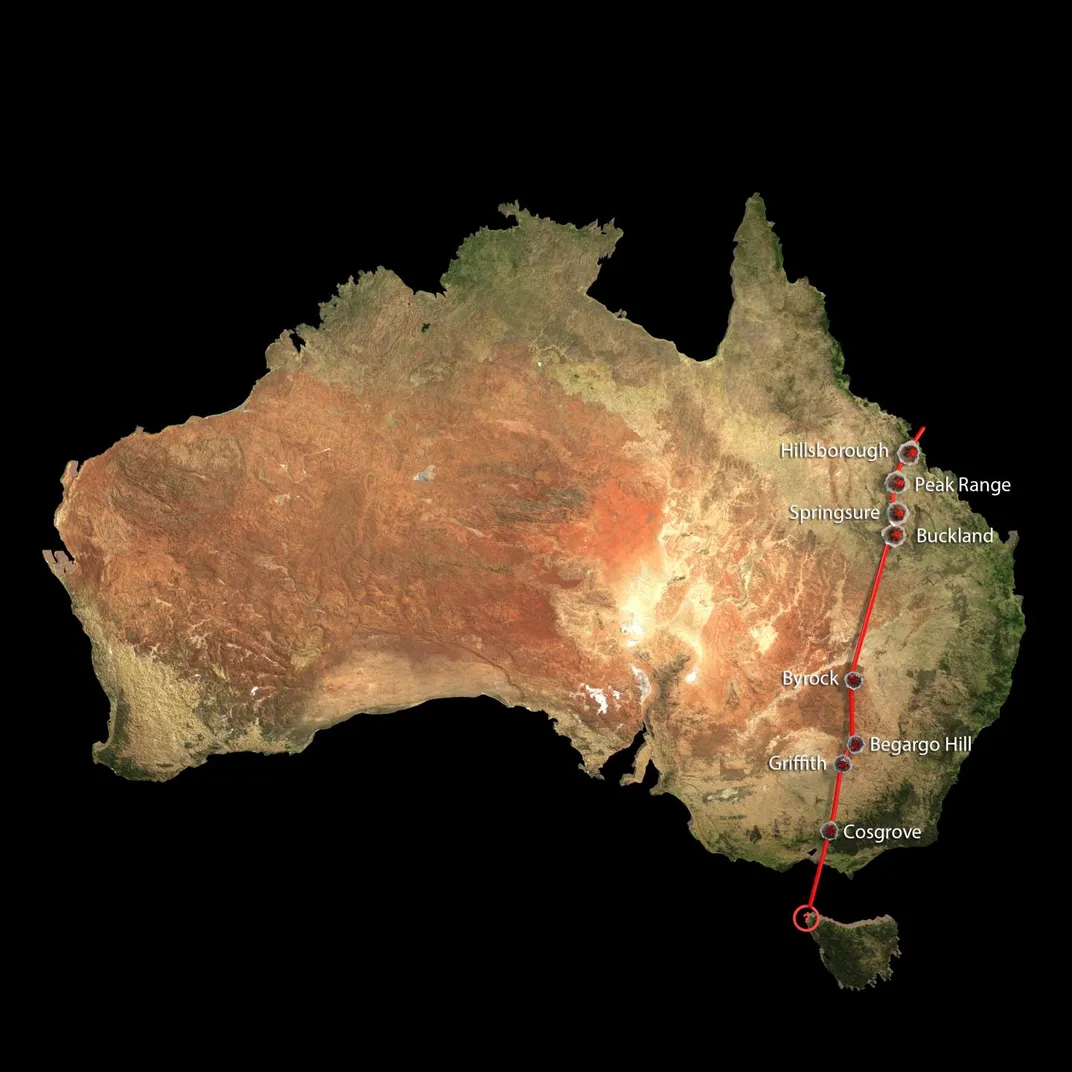Scientists Recently Realized That 1,240 Miles of Volcanoes Were Connected
Now the Cosgrove Volcano Track is the longest on Earth
/https://tf-cmsv2-smithsonianmag-media.s3.amazonaws.com/filer/f3/64/f36479d3-3862-4d83-b267-5aa0c744ca22/42-63793665.jpg)
Sometimes, it’s all a matter of perspective. That’s what scientist discovered when they figured out that several small chains of volcanoes in Australia actually form a “megachain” 1,240 miles long.
Tia Ghose writes about what is now considered the world’s longest chain of volcanoes for LiveScience. Though scientists were aware of four separate tracks of past volcanic activity in eastern Australia, writes Ghose, they only just discovered that they were linked. Ghose writes that though some scientists thought they weren’t connected at all, a team of Australian scientists begged to differ, suspecting that “the Australian volcanism had a common source: a mantle plume that melted the crust as the Australian plate inched northward over millions of years.”
In a new study, Rhodri Davies and colleagues present the evidence for what they’re calling “Earth’s longest continental hotspot track.” They note that though hotspots don’t seem to be associated with the usual boundaries of tectonic plates, they can form above “mantle plumes” that originate at the boundary of Earth’s core and mantle.
When the team analyzed past data and combined it with analysis of the age of elements found in Australian minerals, they were able to create a model of Australia’s tectonic plate. In a release, the team explains that they discovered that the reason sections of the track don’t have volcanic activity is “because the Australian continent is too thick to allow the hot rock in mantle plumes to rise close enough to the Earth's surface for it to melt and form magma.”

The team learned that where the Earth’s outer layer, or lithosphere, was thinner than 130 km, the plumes created volcanic activity. A mineral called leucitite tipped them off to thin spots in the continent and once they realized the connection, they were able to link the seemingly-unrelated chains of volcanoes into one.
Now that the Cosgrove Volcano Track, as it’s been named, has finally been identified, scientists hope they’ll be better equipped to use the information to understand the geologic record a bit more clearly. “We are getting much better at understanding volcanism in Australia,” Davies told The Guardian’s Oliver Milman. Perhaps that change in perspective will be able to help other earth scientists connect the dots in new ways.
/https://tf-cmsv2-smithsonianmag-media.s3.amazonaws.com/accounts/headshot/erin.png)
/https://tf-cmsv2-smithsonianmag-media.s3.amazonaws.com/accounts/headshot/erin.png)